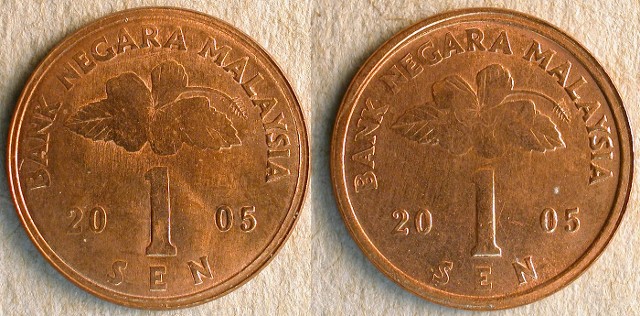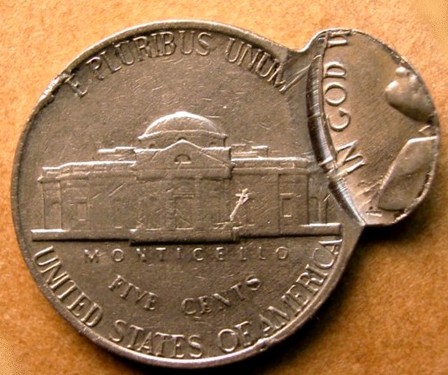PART III. Die Installation:
Mules:
Pseudo-mules
Definition: A coin with the same raised design on each face, but which is struck with a pair of conventional dies. Pseudo-mules can be generated by accident or by intent. There are three ways a pseudo-mule can be generated. For purposes of this discussion, we’ll describe a pseudo-mule that carries the design of the hammer die on each face. An example would be a two-headed cent from the 1980’s (before inverted die installation was introduced by the U.S. Mint).
Method 1. A coin flips over on top of a planchet, landing within the collar or in a perfectly centered position. The
two discs are struck together. The original die-struck hammer die design is flattened. The original die-struck anvil die design is obliterated by the force of the strike. The double thickness causes an increase in effective striking pressure, which facilitates erasure of the anvil die design.
Method 2. Two planchets are struck together within the collar, producing two in-collar uniface strikes. The bottom coin is ejected while the top coin flips over and lands on another planchet. During the second strike, the original hammer die design is flattened, while the original featureless surface is struck by the hammer die.
Method 3. The sequence begins with a coin with an in-collar, first-strike brockage of the hammer die design on the face normally struck by the anvil die. The coin flips over and lands in the collar. A planchet is fed on top of it and then struck. The top coin has on its bottom face a first-strike counterbrockage of the hammer die design.
A 2005 Malaysian 1 sen coin shown below carries the obverse design (struck by the hammer die) on each face. It is an intentionally fabricated, double-struck pseudo-mule. Method 2 was almost certainly employed.


